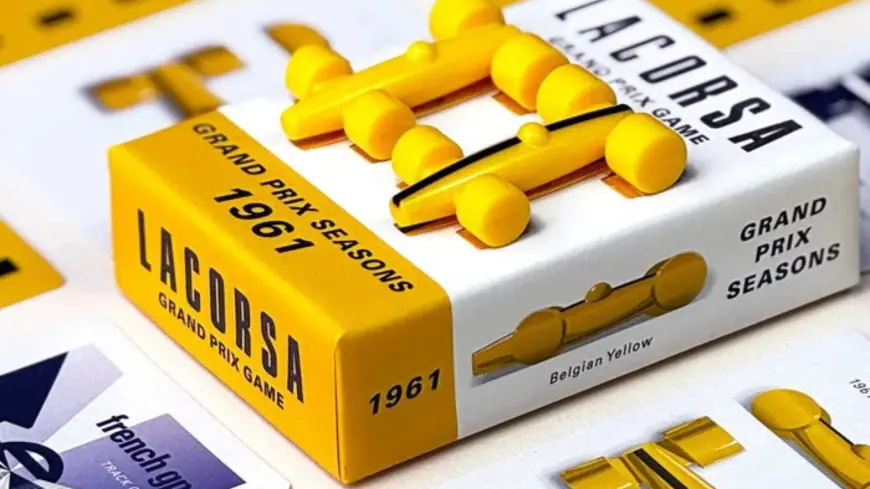What Defines A Truly Strategic Race Track Game Experience?

Speed grabs attention. But the strategy keeps it. That’s the truth behind a great race track game. The surface might seem like it’s just about reaching the finish line first, but smart players know it’s much more. Every move, every card played, every risk taken—all point to something more profound. A good race feels fast. A great one feels tense. But a truly strategic race track game makes every player sit forward and think.
The best moments don’t happen when someone surges ahead. They come when an unexpected overtake shifts the flow, when team order becomes a turning point. When one player gambles and creates a big gap, it can lead to serious consequences. That’s where strategy shows itself. And that’s what sets a well-designed Race Track Board Game apart from something more casual.
Modern racing games have gone beyond roll-and-move systems. The focus now is on track position. The goal isn’t just to go faster. The goal is to figure out how to manage the points-paying positions most effectively. Read the board. Watch the timing. Make the most of bad hands. And most importantly, adapt. These are the key parts of a truly strategic experience.
Track Design That Forces Smart Play
Circuits are designed to challenge drivers, each with its own set of characteristics that make it unique. The high speeds of Monza can lead to multiple overtakes on the final lap. A tight circuit like Monaco can slow the race to a procession. That requires careful thought. Players must develop their pit wall strategy. Consider gaps. Anticipate traffic. It’s not just racing—it’s managing position.
Difficult-to-pass drivers can act as traps. They block fast cars and punish those who didn't perform their best in qualifying. Some games even include rules for slipstreaming, which changes how track position is assessed and can open opportunities for overtaking.
A track's unique features make players think two or three turns ahead. It rewards strategic planning, punishes overconfidence, and encourages mental tactics. That’s the difference between a typical race and one shaped by the circuit’s conditions.
The Role of Resource Management
Strategy isn’t just about speed. Great race games often involve managing different elements. Maximize power, maintain race pace, and control track position. Each factor limits what players can do, which makes the game interesting. Having too many resources makes every decision feel the same. Tight limits make each choice more meaningful.
Some games give players a hand of cards each turn. Once played, they’re temporarily gone. This raises questions like: Is now the time to go all out? Or is someone about to take the lead and attract attention? Should you save a top-speed card for later or use it to break through a block?
Other games add house rules. Some allow players to risk extra moves—at the risk of failure. These layers add depth and prevent the game from becoming predictable. Instead, every decision impacts not just you, but everyone on the board.
What Adds Replay Value
Not all racing games deliver the same experience twice. The best ones feel unique each time. That might come from the randomness of each shuffle and deal. Sometimes it’s driven by the players themselves—different tactics, latest tracks, fresh opponents.
That’s where a solid Formula Racing Game shines. It avoids fixed patterns, allowing flexibility. It responds to how people play. One game might be won through steady control, while another through wild bursts of speed. The mix of predictability and surprise is what keeps players coming back.
A game that allows for comebacks enhances this effect. Not every race should be won from the front. Good mechanics let players shift strategies mid-game, recover from mistakes, and spot opportunities to seize them.
This kind of dynamic play keeps the experience fresh. It’s not about who played best on turn one. It’s about who stays sharp until the final lap.
How Risk Builds Better Games
Risk is where excitement meets fear. Racing games use this well. Some include push-your-luck elements. Get too aggressive fighting for position, and you might crash. Play a risky card and lose your position. Wait too long to act, and you might miss your chance.
This risk creates stories. Players remember when they took the lead and pulled ahead, or when a smart move backfired and cost them the win. These moments stick with people. They’re not just about winning; they’re about what happened along the way.
Reasonable risk-taking doesn’t punish blindly. It rewards intelligent guesses. It keeps tension high. It makes each round feel meaningful. Without it, the game becomes a dry march to the finish. With it, every lap feels alive.
Lacorsa Grand Prix Game: A True Strategic Ride
Among racing board games, the Lacorsa Grand Prix Game and 1962 Expansion stand out not just for how they play, but for how they feel. From the first move, it creates a sense of pressure. Players find themselves planning, adjusting, watching others, and reacting in real time.
Each playthrough tells a different story. One race might feature a late comeback. Another could hinge on a single risky overtake. The mix of chance and player control keeps each outcome fresh. No two races are the same.
Lacorsa isn’t about gimmicks. It delivers genuine Formula racing excitement on a tabletop. It gives players enough control to feel smart and enough unpredictability to keep them alert. And you don’t need to be an F1 expert to succeed. For those who enjoy strategy, planning, and close racing moments, Lacorsa offers a rich and rewarding experience.
What's Your Reaction?
 Like
0
Like
0
 Dislike
0
Dislike
0
 Love
0
Love
0
 Funny
0
Funny
0
 Angry
0
Angry
0
 Sad
0
Sad
0
 Wow
0
Wow
0


















































